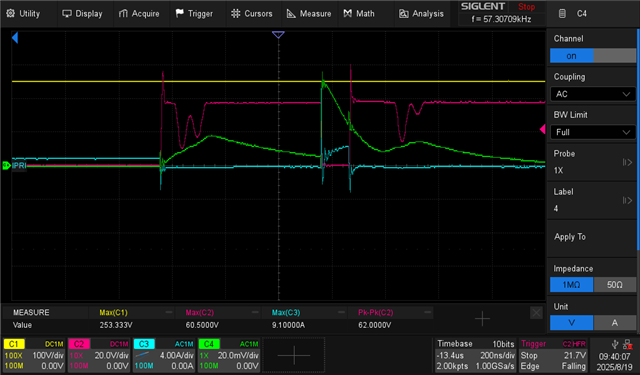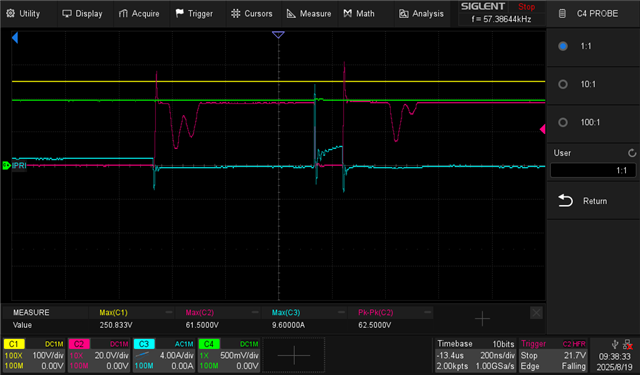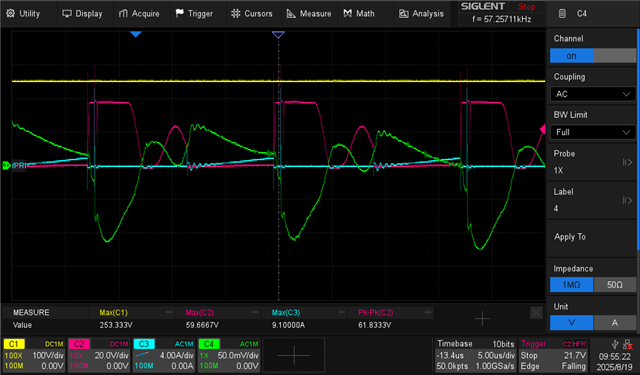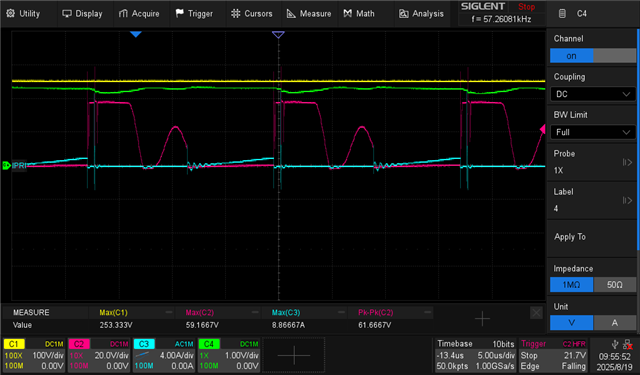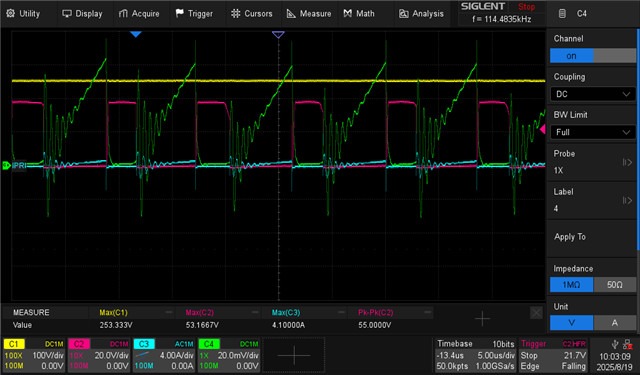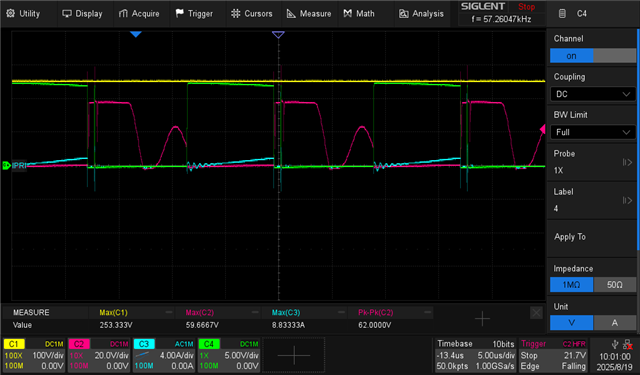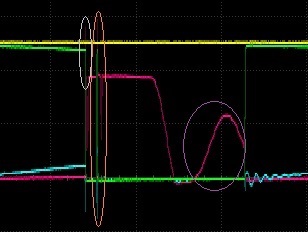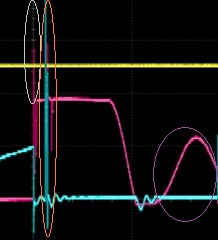Tool/software:
Dear TI Team,
Do you have any advice on how to eliminate this double switching pulse? These are measured waveforms using a custom board and BNC probe contacts: output voltage (yellow channel), switch node voltage (magenta), primary current measured across current sense resistor (cyan).
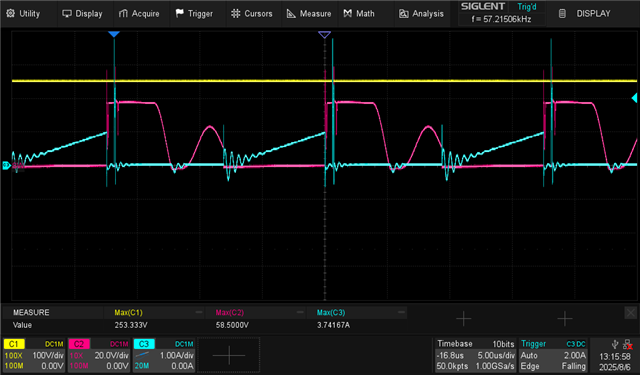
Shortly after the FET stops conducting, the controller turns the FET back on for about 100ns.
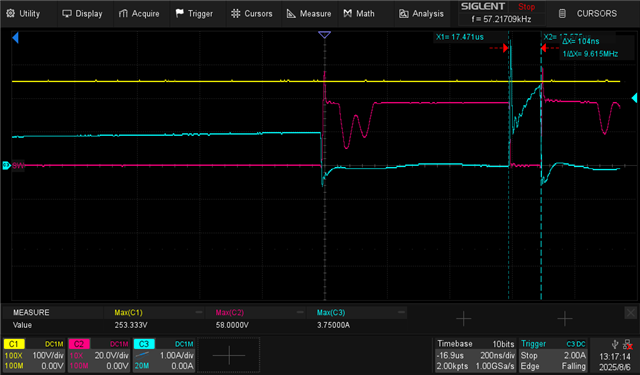
If someone wants to reach out to me, I can share schematic and quick start calculator, etc.


